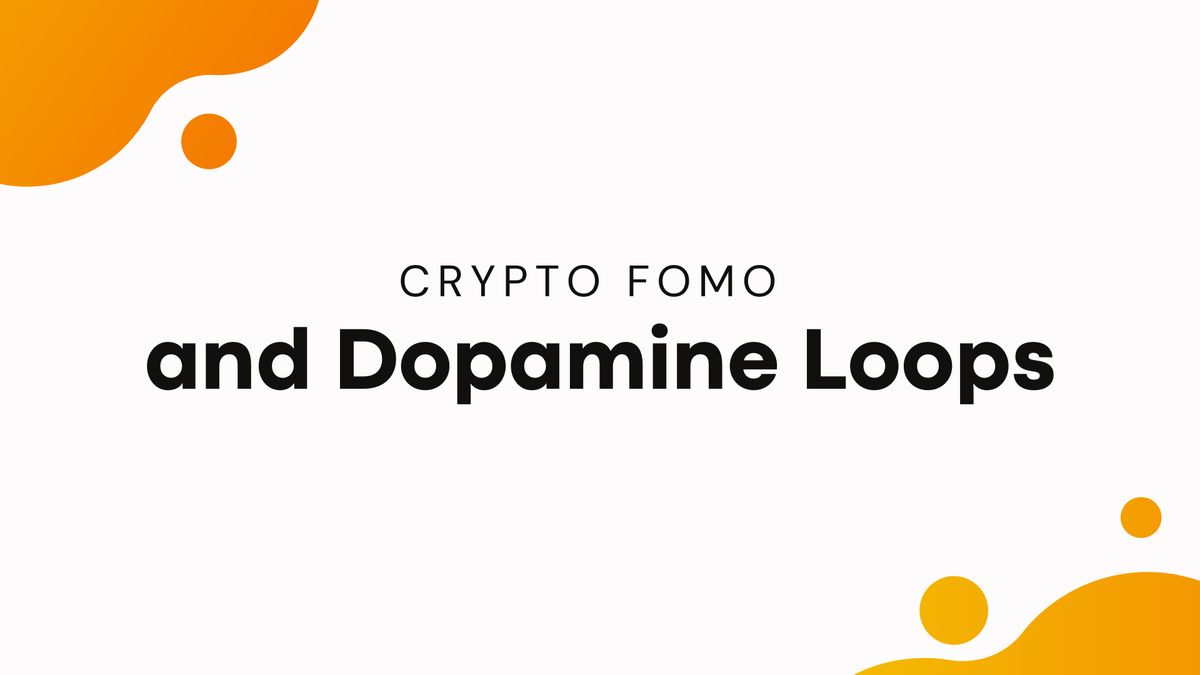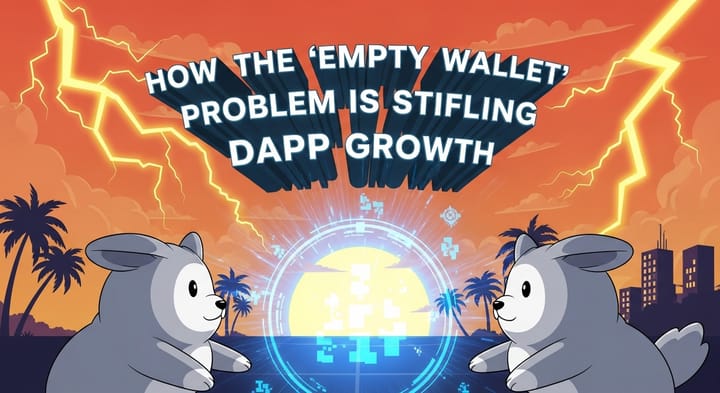Crypto FOMO and Dopamine Loops

The explosive growth of cryptocurrency markets has ushered in a parallel surge of investor psychology phenomena, chief among them, Fear of Missing Out (FOMO) and dopamine-driven feedback loops. Token launches, price surges, and flashing candlesticks aren’t just financial events; they’re powerful behavioral triggers that can reshape our neurochemistry and mental well-being.
Defining FOMO in the Crypto Context
Fear of Missing Out (FOMO) describes the anxiety that arises when we believe others are reaping rewards from which we’re excluded. In crypto, FOMO kicks in whenever:
- A new token launch trend on Twitter or Telegram.
- A price chart's “moonshot” inflates within hours.
- High-profile figures hype a memecoin.
This digital-age version of social anxiety is amplified by 24/7 market access and real-time price alerts. According to Psychology Today, anticipating a reward is like catching the next token rally, activating the same brain regions as receiving the reward itself, creating a potent feedback loop of craving and action.
The Neuroscience of Dopamine Loops
Dopamine isn’t simply the “pleasure molecule”; it’s the neurotransmitter driving our motivation and reward-seeking behavior. Key aspects:
- Anticipation over reward: Dopamine spikes when we expect a win, scrolling price charts, or waiting for that 0.1 BTC airdrop.
- Intermittent reinforcement: Like slot machines, unpredictable price jumps produce stronger addiction than constant rewards.
- Tolerance and escalation: Over time, greater “hits”, bigger trades, or riskier tokens are needed to trigger the same dopamine response.
Researchers at NewsWatchTV describe how crypto trading mimics gambling, with volatility acting as a neural slot machine. Their “dopamine loop” framework highlights three market features that hijack our brains: nonstop access, unpredictable price swings, and social media hype, each amplifying compulsive screen-watching and compulsive trading.
Behavioral Finance Meets Token Launch Hype
Token Issuances and Pre-Sale Frenzy
New coin offerings (ICOs, IDOs, airdrops) often feature aggressive marketing countdown timers, exclusive whitelists, and celebrity endorsements. Behavioral finance research shows that scarcity cues (e.g., “only 500 spots left”) and social proof (“10,000 users already in”) trigger loss aversion and herd behavior, driving FOMO‐fueled purchases.
Price Charts as Pavlovian Prompts
Every bullish candle is a conditioned stimulus; price alerts are the ring of Pavlov’s bell. Traders who fixate on live charts experience constant anticipatory dopamine release, intensifying anxiety when prices stall or reverse. Over time, mere app notifications can induce stress, restlessness, and compulsive checking, hallmarks of digital addiction.
FOMO’s Toll on Mental Health
Anxiety, Stress, and Sleep Disturbance
A UK study on digital stress found that 30% of individuals report poorer sleep quality due to financial worries tied to market volatility. In crypto, the stakes feel even higher—overnight losses can wipe out life savings, fueling chronic anxiety and insomnia as traders struggle to “stay plugged in.”
Obsessive Behavior and Emotional Dysregulation
When the brain’s reward circuits are repeatedly hijacked, emotional regulation falters. Traders report compulsive thoughts “What if it moons while I’m away?” and impaired decision-making under stress. Behavioral psychologists note parallels to substance addiction: tolerance, withdrawal (restlessness when offline), and continued engagement despite harm.
Depression and Financial FUD
Beyond FOMO lies Fear, Uncertainty, and Doubt (FUD). Sudden market crashes trigger despair, guilt, and hopelessness in investors who chase losses. According to Simple.app, the roller-coaster of crypto markets can exacerbate pre-existing mental health issues, urging communities to integrate wellness support into digital finance spaces.
Real-World: From Memecoins to Meltdowns
- Dogecoin 2021 Rally: Social media hype led to 12,000% gains; latecomers buying at peaks faced catastrophic losses.
- Shiba Inu Surge: One trader turned $8,000 into $5.7 billion, only to watch portfolios vaporize in the next correction, an exemplar of intermittent reinforcement and emotional whiplash.
These anecdotes underscore how extreme volatility can wreak havoc on investors’ mental states, swinging them between euphoria and depression within days.
Mitigation Strategies for Behavioral Resilience
Digital Hygiene and Mindful Trading
- Set Strict Screen-Time Limits: Use app timers or airplane mode to enforce breaks.
- Define Entry/Exit Rules: Pre-set buy/sell thresholds based on risk tolerance, stick to them, no exceptions.
- Mindful Logging: Maintain a trading journal, noting emotions and rationales behind every decision.
Cognitive-Behavioral Techniques
Identify cognitive distortions, “This dip is a guaranteed crash,” and challenge them with data. Incorporate brief mindfulness sessions before critical decisions to calm impulsivity and reduce emotional reactivity.
Community and Professional Support
Peer-led groups, crypto-specific support forums, or Gamblers Anonymous can provide accountability and share coping strategies for trading addiction. Mental health professionals versed in digital compulsions can offer tailored interventions.
Technology’s Role: Notifications vs. Nurture
While crypto platforms deploy behavioral triggers, push alerts, “top gainer” banners, and live leaderboards to boost engagement, the same tools can be reconfigured for user well-being:
- Customizable Alert Intervals: Fewer, more meaningful notifications.
- Built-In “Cool-Down” Modes: Automatic market-free periods for emotional decompression.
- Wellness Reminders: Periodic pop-ups encouraging breaks, hydration, and sleep.
Tech companies bear the responsibility to balance profit with psychological safety by embedding digital-wellness features in trading apps.
Conclusion
Crypto’s frontier of decentralized finance offers unparalleled opportunity, yet its behavioral minefield demands awareness. Token launches and price charts aren’t neutral data points; they’re precision-engineered triggers for dopamine loops and FOMO. Left unchecked, they can foster anxiety, insomnia, and emotional turmoil.
By understanding the neuroscience of reward, recognizing the telltale signs of compulsive trading, and adopting mindful, data-driven strategies, investors can reclaim mental equilibrium. As the ecosystem matures, integrating mental-health safeguards will be crucial to building a resilient community, one capable of riding market waves with clarity, not compulsion.
References
- Why Crypto Memes Hijack Your Brain, and How to Resist (Psychology Today) https://www.psychologytoday.com/us/blog/the-human-algorithm/202501/why-crypto-memes-hijack-your-brain-and-how-to-resist
- The Psychology Behind Crypto Addiction: https://newswatchtv.com/2025/04/21/addiction-risk-reward-dopamine/
- FOMO, Anxiety, and Social Media: https://www.healthbenefitstimes.com/fomo-anxiety-and-social-media-the-unseen-dangers-of-digital-life/
- Springer: https://link.springer.com/article/10.1007/s11135-023-01739-z
- Crypto and Mental Health: https://simple.app/blog/crypto-and-mental-health/
- How Digital Media Affects Dopamine (Federico Ferrarese) https://www.federicoferrarese.co.uk/2025/01/01/digital-media-and-dopamine/
MITOSIS official links:
GLOSSARY
Mitosis University
WEBSITE
X (Formerly Twitter)
DISCORD
DOCS



Comments ()